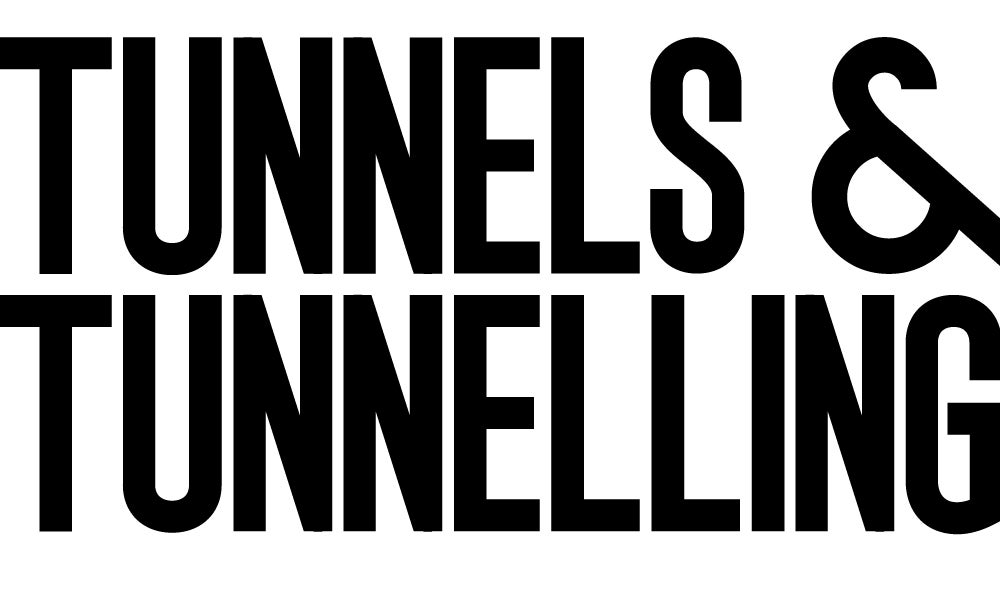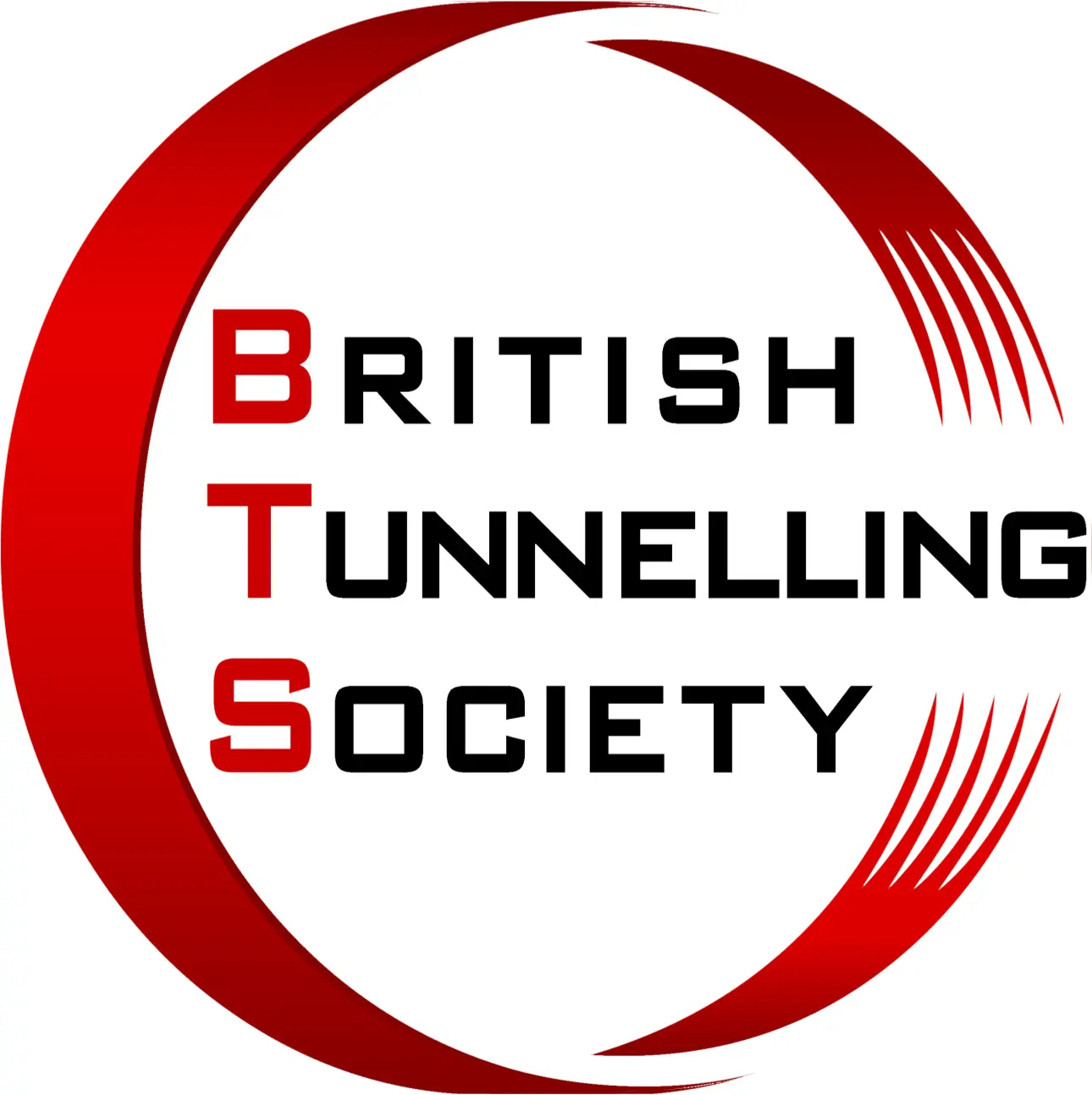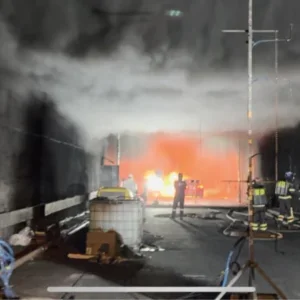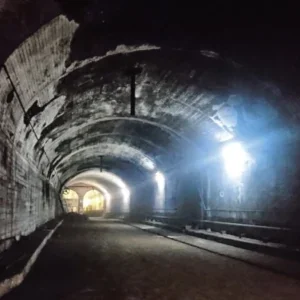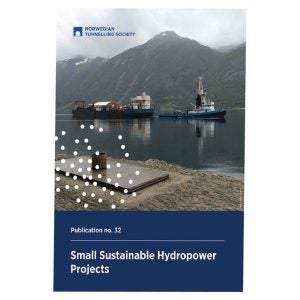Martin Herrenknecht explained that his company had been responsible for supplying the 14.2m Mixshield used to drive the 2.7km tunnel. The machine, named ‘Trude’, is the largest diameter shield machine ever manufactured and has been equipped with some major technical innovations to carry out such a demanding project.
The River Elbe between Hamburg and the estuary to the North Sea is one of the world’s busiest waterways and acts as a natural boundary between the city centre and the Port of Hamburg. By the end of the 19th century, thousands of workers were crossing the Elbe to work by the only means available – the ferry. It was this that prompted the decision to build the first Elbe Tunnel in 1907-1911. Sixty-five years later, the economic importance of Hamburg’s port had increased and the decision was taken to build a new Elbe Tunnel. The ‘new’ six lane tunnel was officially opened in January 1975 and about 56 000 vehicles passed through a day. Today, the volume has practically doubled to an average of 110 000/vehicles/day, causing long tailbacks at the portals. The solution was to construct a fourth Elbe Tunnel tube.
Starting from the south bank start shaft, the tunnel crosses below the Elbe, separated from the river bed by a minimum overburden of approximately 7m, the maximum being approximately 13m. At the deepest point of the river, the crown lies only 11m below the river bed, so the condition of the overburden has been improved as much as possible. This has included compacting the river bed sands and silts on a 20m wide corridor across the river using a vibrofloatation technique and adding a 1.5m deep layer of copper stone to the area during tunnelling. The lowest tunnel position below the Elbe is approximately 42m below sea level, with expected water pressures up to 6 bar. The river crossing section is followed by the densely populated northern Elbe incline, which rises steeply to a height of about 38m. The tunnel passes only 9.5m below the basements of some of the buildings. Two options were considered at the pre-tender stage:
1. Using the same combination of an immersed tube and shield driving as employed on the existing tunnel
2. Using a Mixshield over the whole length of the river and the northern slope
Selection of a Mixshield
Early estimations suggested that the overall cost of both construction methods would be roughly the same. However, for a number of reasons, a Mixshield machine was selected to drive the full length of the tunnel. With the construction method determined, the plan approval procedure was conducted from 1988 to 1990 and had to cope with 7500 objections, mainly from local residents affected by the project. Following tendering in October 1993, the contract was awarded on Octobe 13 1995 to a JV of Bilfinger + Berger; Dywidag; Heitkamp; Hochtief; Philipp Holzmann; Wayss & Freytag; and Züblin.
The fourth Elbe Tunnel tube has been designed to incorporate two vehicle lanes with a width of 3.75m each, a 2m hard shoulder and two emergency pathways, each 0.5m wide in the shield driven section of the tunnel. The ground through which it passes is characterised by complicated geology. The succession of cohesive and non-cohesive soils includes a range of loose to firm sands, gravels, clay micaceous silt and glacial marl. The first 500m of the drive passed through reclaimed land from the harbour, comprising mostly sand, gravel, debris and fill material. During Trude’s passage through this section, large pieces of scrap iron were collected in the separation plant, after causing a great deal of damage and wear to the cutting wheel.
Trude is equipped with 42 forward facing ports around the shield, positioned at angles of 10-20°. Through these ports it is possible probe drill the ground 20-25m ahead of the shield. The same ports can also be used to inject grout in front of the shield for ground stabilisation purposes.
Trude, like many other famous ladies, has a number of impressive vital statistics. First, at 14.2m o.d., Trude is the largest diameter shield machine ever built. The overall installed length of the machine, including trailers, is 60m and it is equipped with 17 hydraulic motors delivering 3500kW of power. Overall weight is approximately 2600t, of which 400t is accounted for by the cutting wheel. One of the technical innovations provided by the machine is the ability to change cutting tools under atmospheric conditions.
The 14.2m diameter cutting wheel was designed and manufactured specifically to handle the ground conditions of the Elbe crossing and houses a total of 30 x 431.8mm disc cutters and 120 scraper tools. The 3200kW drive unit provides a maximum installed torque of 26MNm, with a variable speed up to 2.5 revs/min.
The centre of the cutting wheel houses a separate 3m diameter tunnelling machine, which can be rotated in either direction independently of the main cutting wheel. The cutting wheel has a variable rotation speed of 0-2.5rev/min, with a maximum torque of 600kNm, and can displace 600mm in front of the main cutting wheel. The centre tunnelling machine also has its own separate slurry circuit, and the effect of keeping the centre cutter free is considerable. It has been proved that the cutting wheel torque is reduced by up to 50% when such a centre cutter is used. In addition, the force for advance during the excavation cycle can be greatly reduced in cohesive soils. All shield steel work has been designed for an operating pressure of up to 5 bar.
One of the major technical innovations in Trude’s design is the ability to enter the five main spokes of the cutting wheel to change cutting discs and scraper tools in free air. This facility has proved to be invaluable throughout the drive. Due to the abrasive ground conditions, man entry into the plenum had to take place more frequently than expected.
Each cutting disc is mounted in a pressurised housing with a hydraulically operated gate valve. The cutting disc is held in position by a hydraulic cylinder while the mounting bolts are removed. The cutting tool is then withdrawn and the gate valve is closed, sealing the housing off from the face. A crane attachment is used to remove the worn cutting disc and a new disc is mounted. The same method is used for replacing scraper tools in the five main cutting wheel spokes.
Another innovation that has been developed during the project is the seismic survey system, which is called the Sonic Softground Probing System (SSP). It uses a high-frequency transmitter on the cutting wheel and acquires data measurements throughout the tunnelling process. A signal is produced in the transmitter by a small mass oscillating in an electromagnetic field against a front steel diaphragm. A signal in the frequency range 100-6000Hz is emitted in the forward direction and the receivers on the cutting wheel record waves reflected by any discontinuities. A converter in the cutting wheel digitises the transmitted and received signals and these are passed back through a slip ring assembly into one of the control cabin computers on the back-up trailers.
|
“Trude, like many other famous ladies, has a number of impressive vital statistics” |
In parallel with the seismic measurements, the PCs communicate with the TBM’s guidance system to obtain the exact position of the cutting wheel. Every tenth recording made by the receiver is achieved without any signal being emitted by the transmitter, enabling the SSP system to calculate the noise generated by the machine only. For every signal recorded normally, the computer removes the source signal or the output and then removes the noise generated by the machine. Every few metres of advance, the processed data are converted by graphical interpretation software into a graphical image that shows the discontinuities in the ground. The SSP system operates automatically and provides the TBM drivers with a 3D reflection image of the next 20-30m ahead of the cutting wheel in real time.
The machine was brought to site by 120 vehicles, the largest load weighing 186 tonnes. Four mobile cranes were used to erect it, including two 450 tonne and one 300 tonne crane. The launch and assembly programme took around four months.
Problems experienced during the drive
The first man entry into the plenum took place just after the machine had entered under the River Elbe. Ultrasonic measurements revealed extensive wear, and damage had been caused by the scrap metal and debris from the landfill. Repairs to rectify this damage took six to seven weeks under compressed air. The crew noted excessive wear on the rear faces of the cutting wheel due to build-up of the abrasive glacial material between the cutting wheel and shield can, which resulted in a grinding action. To reduce this problem, special scraper tools were manufactured and welded on to the rear faces of the cutting wheel.
Later inspections revealed that the weld repairs carried out on the cutting wheel and the original steel work had been worn down from 80mm to just 15mm. A further six weeks were required to effect repairs under compressed air. The cutting discs themselves were also subject to extensive wear; after completing 2000m, 300 cutting discs and 50 scraper tools had been replaced – equivalent to one cutting tool for every 7m. The wear was so extensive that the fronts of the special cutting tool housings were also completely worn, as were the scraper tools.
When the scraper wear was first discovered, the machine was crossing under the Elbe and it was not possible to access the face to effect scraper replacemen. Therefore, the drive torque increased dramatically. As an interim solution, five of the disc cutters were removed and replaced with a special hammerhead scraper tool designed to fit the special disc cutter housing arrangement. This operation could be installed in atmospheric conditions. Once face access was possible, the crew found that, not only had the scraper tools suffered heavy wear, but the actual mountings had been completely worn away. A new scraper tool mounting system was designed and welded in position.
While Trude’s main innovation is the ability it offers of changing the cutting discs and scrapers on the main cutting wheel under atmospheric conditions, any repair to the steel work of the cutting wheel or the scrapers on the minor spokes must be carried out under compressed air.
Several face collapses occurred during man entry sessions. On one occasion, the collapse developed to the river bed. This caused the overburden copper stones, sand, silt and hard stones to fall into the void and run into the face of the machine. Each turn of the cutting wheel allowed more material to fall into the face until the head was locked solid. The cutting wheel could only be restarted after the ground was treated above the shield by injecting grout through the injection and drilling valves located in the skin of the TBM. Two full shifts of intensive slurry pumping were required before the cutting wheel could be turned again.
By the end of the first week in January 2000, the machine had completed around 2300m out of 2560m. The machine broke through on March 2.
The overall average progress rates are as follows:
Comparison was made between the diameter of the latest tunnel and of the previous crossings:
The project began in February 1994 when the tender was issued; the order for construction to start was given on October 3 1995. Fabrication and manufacture of Trude took from August 1996 to February 1997. Pre-assembly of the shield and back-up trailers was from February to May 1997. Machine testing and acceptance took place in Germany in May 1997. Throughout May and June of 1997, the TBM was dismantled and transported to site. Site assembly took place from June to September 1997. Tunnelling began on October 15 1997. Work on the cross passage connections started in early March.
The 4th Elbe Tunnel tube will be open to the public in early 2003, but as urgent repair work is necessary on the existing three tubes, contractors are facing pressure to have all construction works complete in 2002.
